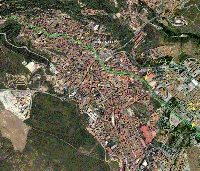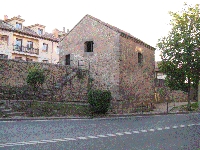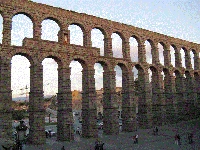
|
Segovia and its surroundings
| For the photo's, see below |
| Home / the complete website |

|

|
| Segovia from the air |

|
| The source |

|
| Casa Aqua |

|
| The aqueduct bridge |
| Item | Info |
|---|---|
| Length | 14,965 km |
| Cross-section | 0,6 m x 0,6 m |
| Volume | 1800 - 4500 m3/day |
| Gradient | 1,6 % |
| Period | Augustan |
| Features |
|
| Recommended literature : |
|
| Recommended website : | |
| How to visit : | see above |
| HOME | More literature on more aqueducts | Last modified: November, 2007 - (webmaster) |